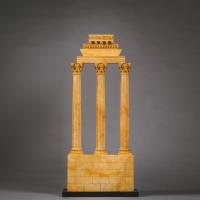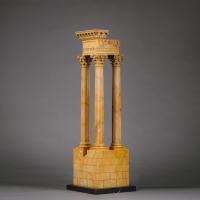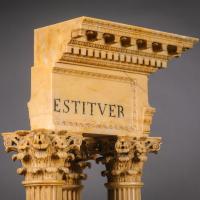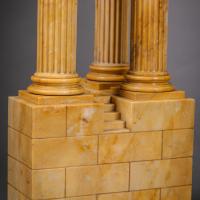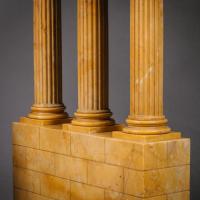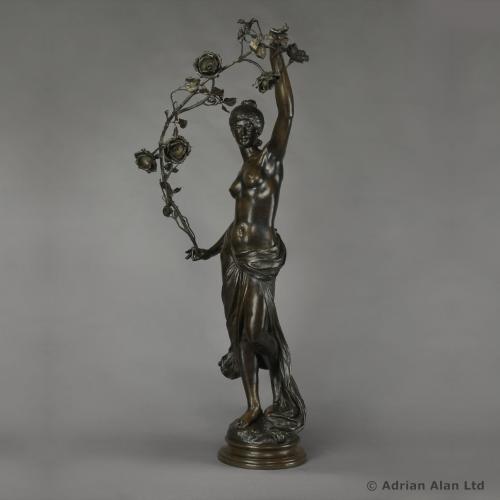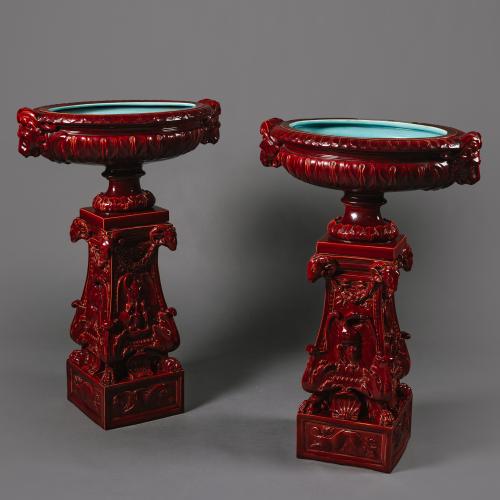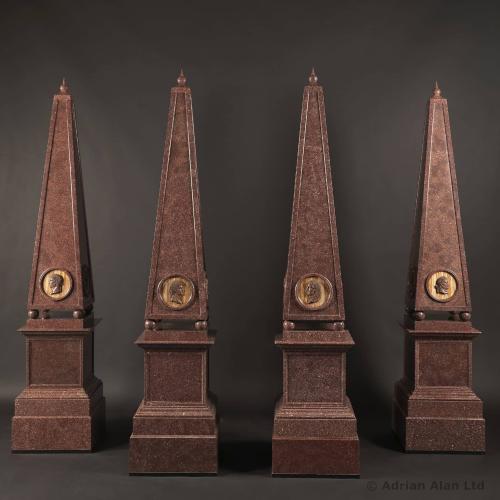

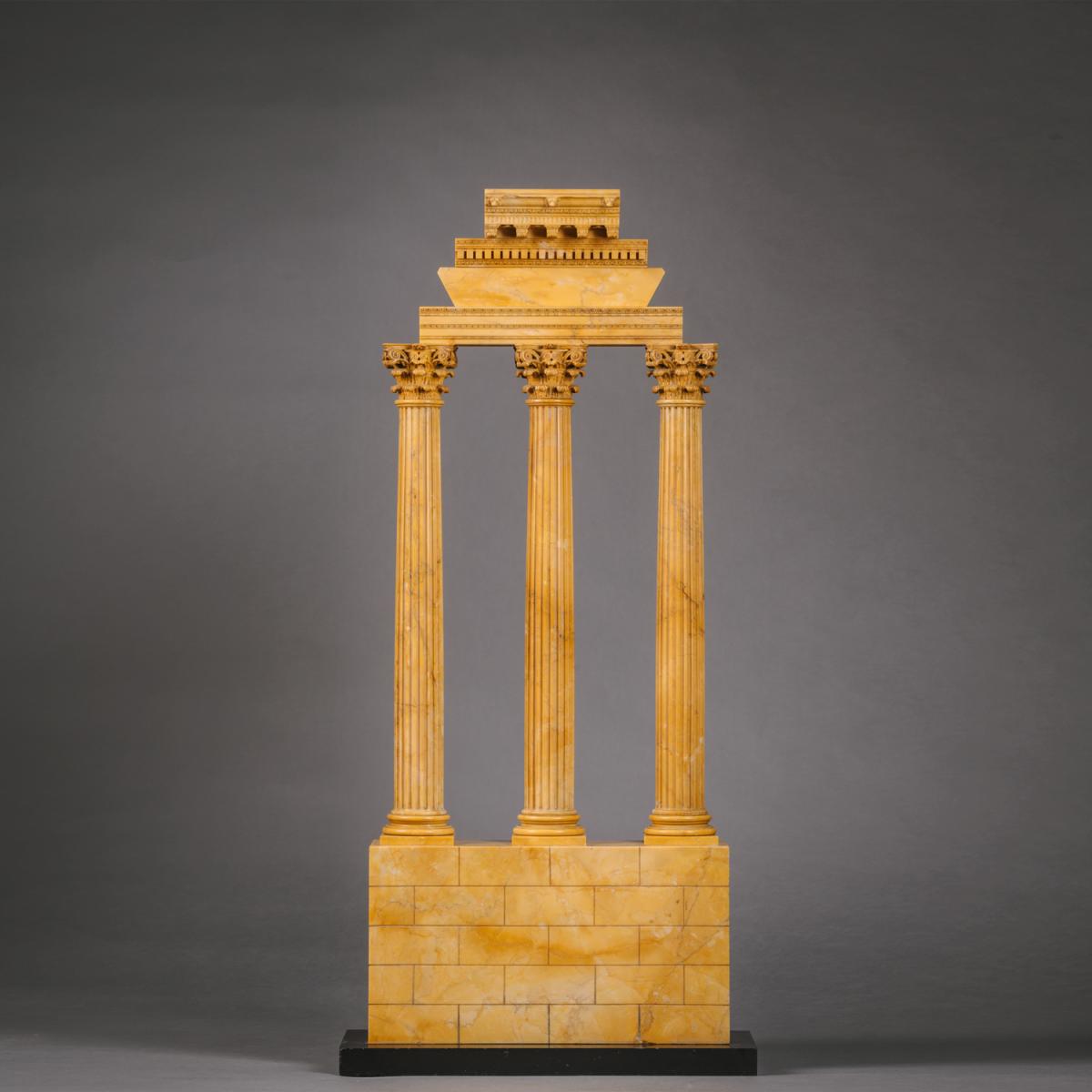
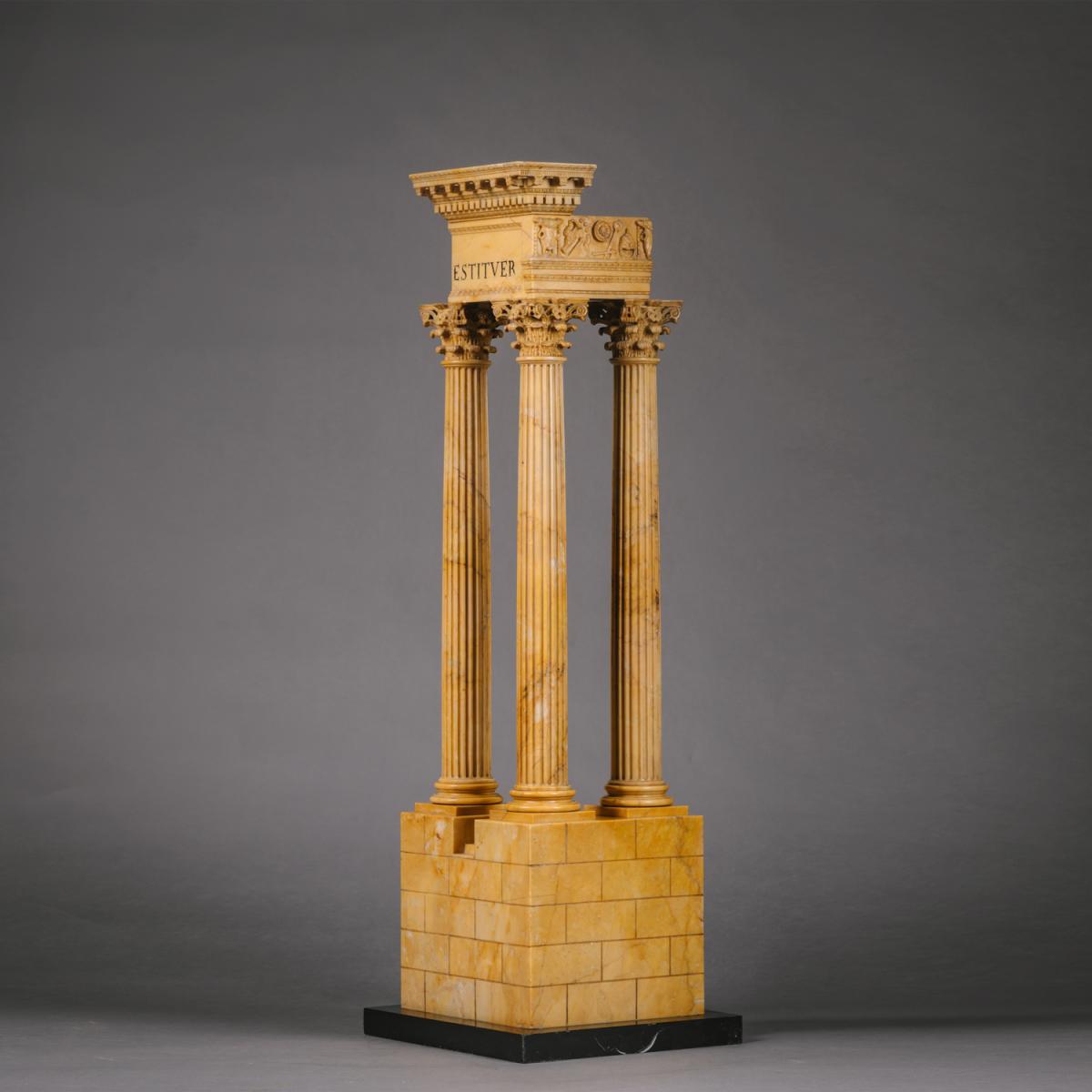
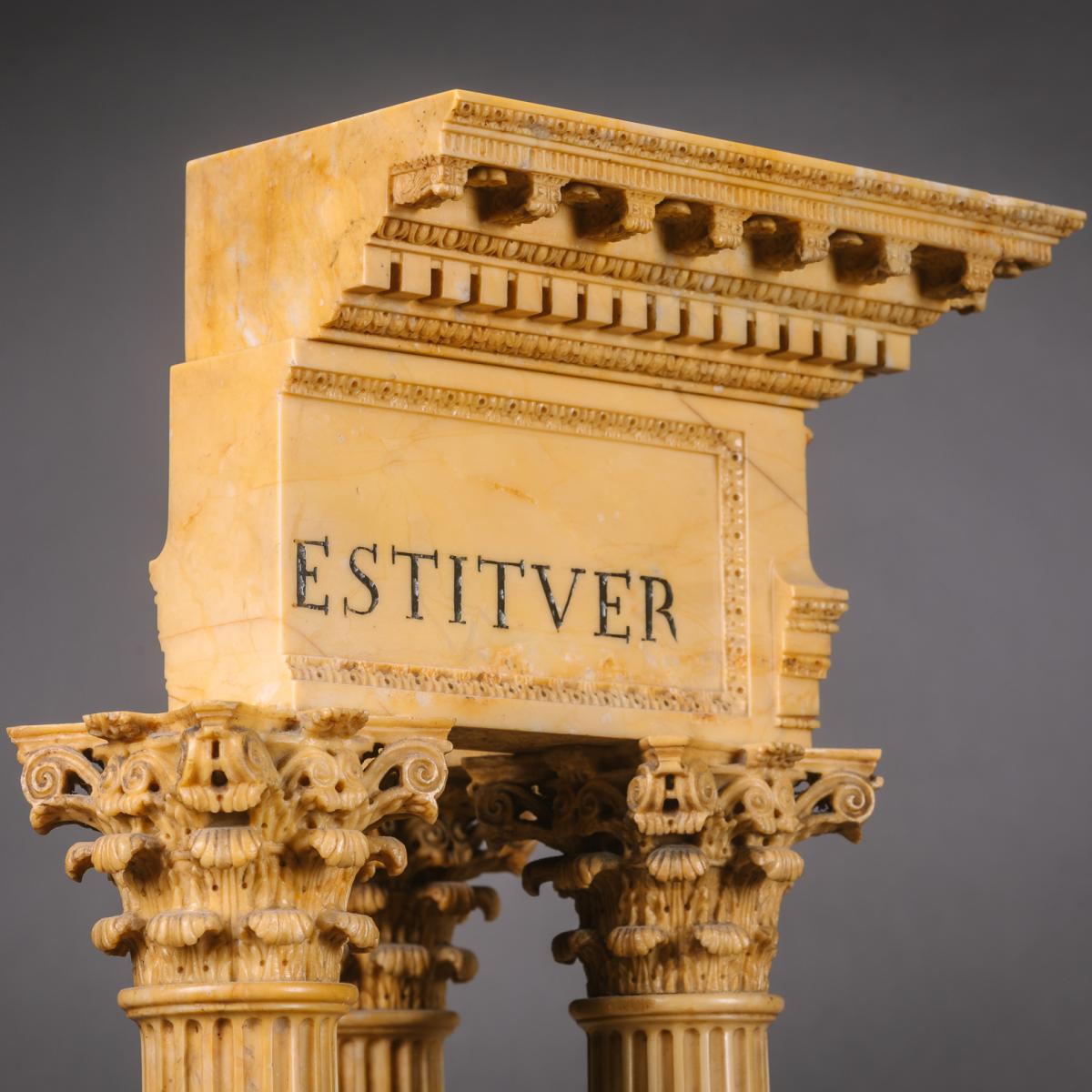
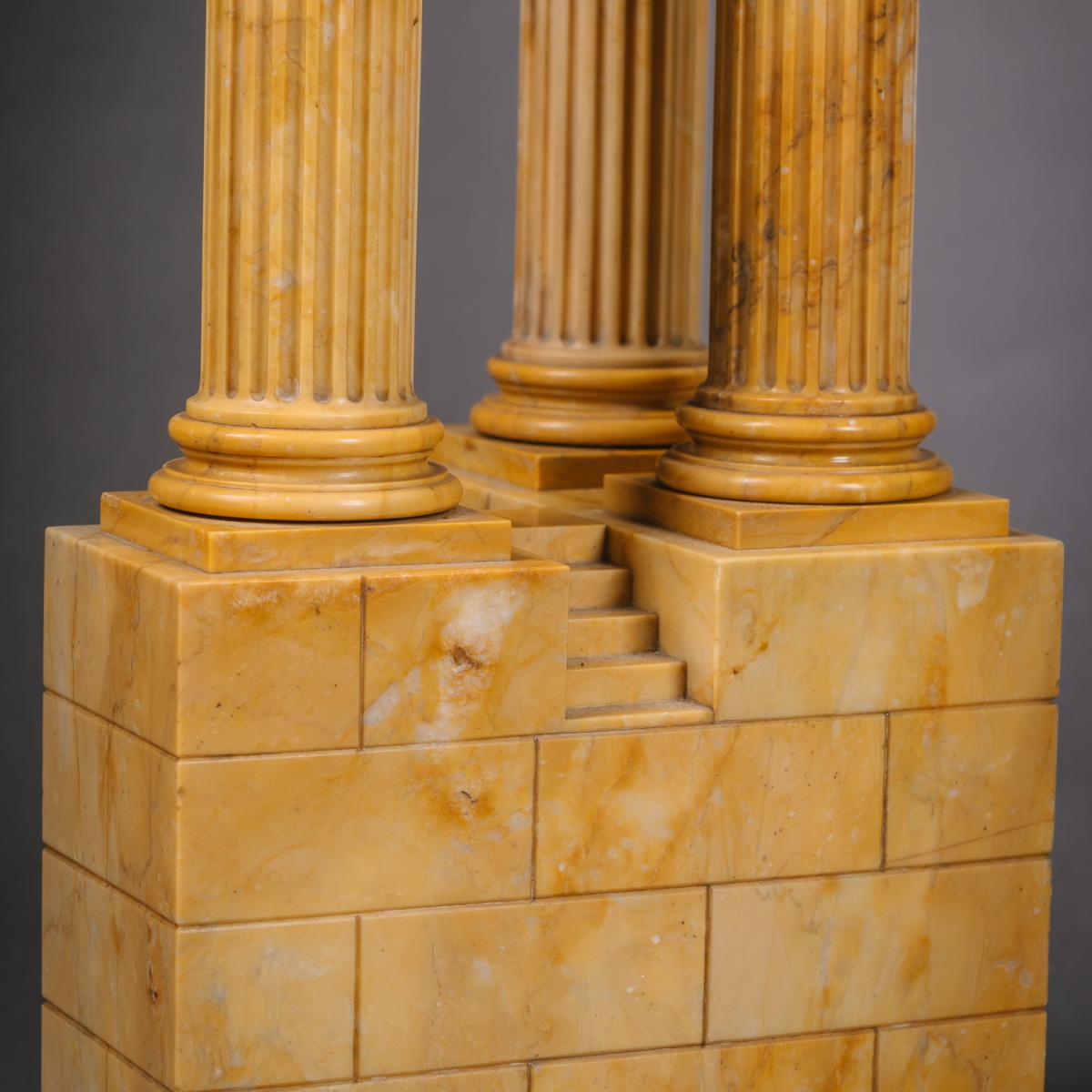
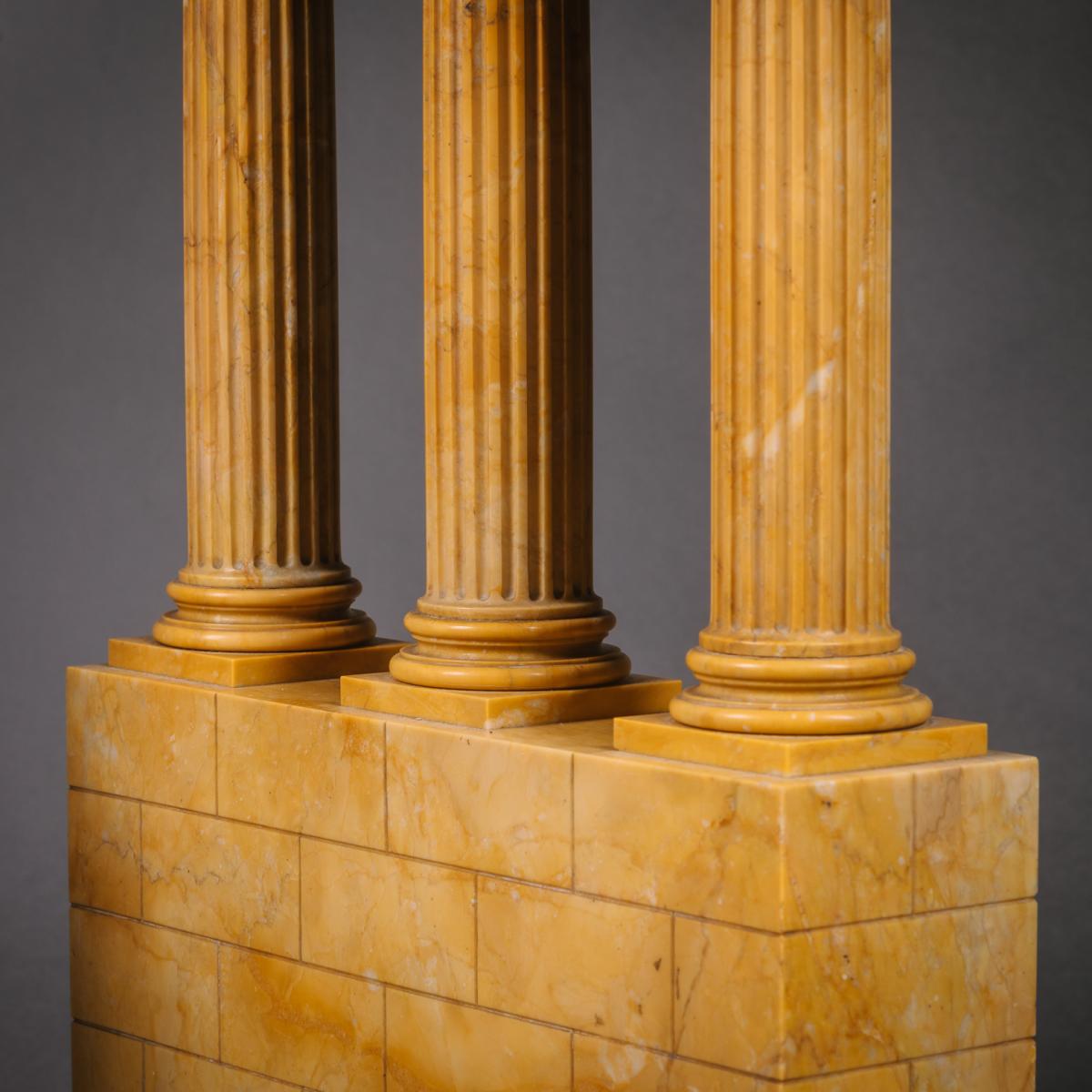
Price on application
This object is eligible for a Certificate of BADA Provenance
The BADA Standard
- Since 1918, BADA has been the leading association for the antiques and fine art trade
- Members are elected for their knowledge, integrity and quality of stock
- Our clients are protected by BADA’s code of conduct
- Our dealers’ membership is reviewed and renewed annually
- Bada.org is a non-profit site: clients deal directly with members and they pay no hidden fees
A Large Pair of Giallo Antico Marble ‘Grand Tour’ Models of Ruins Celebrating the Corinthian Order, Attributed To The Workshop Of Benedetto Boschetti.
The Temple of Castor and Pollux of flat section with three Corinthian columns supporting inverted stepped pediment with dentil cornice. The base modelled with blocks atop a black marble slab.
The Temple of Vespasian and Titus with three corner Corinthian columns supporting a pediment and frieze with part inscription ‘ESTITVER’. The base modelled with blocks atop a black marble slab.
Italy, Circa 1860.
These models of famous Roman ruins of prize monuments of the Corinthian order of architecture are exemplary of the souvenirs of exquisite quality collected by milordi in Italy on their ‘Grand Tour’.
The superior scale and quality of these examples indicate that they are of exhibition quality as evidenced by a very similar set in a photograph of the Italian Court at the International Exhibition in London in 1862. Reproductions of antiquities, sculpture and architectural models, often in coloured marbles, were made throughout Italy, with the famous workshops being those of the Valadier family in Venice, Barzanti in Florence and Boschetti in Rome.
The marble giallo antico was one of the most used marbles of the Roman Empire and was mined at Chemtou in Tunisia, ancient Numidia, and hence it’s also known by the Latin name marmor numidicum.
The Temple of Castor & Pollux
One of the most famous ruins of the Roman Forum are three columns which are all that remain of a temple dedicated to Castor and Pollux, twin half-brothers in Greek and Roman mythology, known together as the Dioscuri. Built in their honour on the spot where, according to legend, Castor and Pollux appeared as two able horsemen to aid the infant Roman Republic in battle against the last King of Rome. Dedicated on the ides of July 484 BC the temple served as a meeting place for the Roman senate and was variously destroyed by fire and rebuilt. The remaining three columns date to the rebuilding by the emperor Tiberius in 6 AD. Already falling down by the 4th century, the temple was closed during the persecution of the pagans in the late Roman Empire, and little is known of its history until the 15th century when only three columns were standing as evidenced by the street running past them being called via Trium Columnarum. By the mid-18th century with the columns at risk of collapse scaffolding was erected for repairs which allowed Piranesi and the young English architect George Dance the Younger to climb up and take accurate measurements. The cause of the Conservatori was promoted by the ensuing production of drawings, engravings and models. Dance wrote “I believe you won't be displeased to see a model cast from the finest example of the corinthian order perhaps in the whole world” (Letter of the 4 October 1760 in J. Lever, Catalogue of the Drawings of George Dance, 2004, p. 64).
The Temple of Vespasian and Titus
Dedicated in 79 AD to the emperors of the Flavian dynasty Vespasian and Titus, it was a classical prostyle hexastyle temple meaning it has a portico with a row of columns. It is situated between the Temple of Concord and the Portico of the Dei Consentes, something of a tight spot in the Roman Forum. The temple is built on a podium and with Corinthian Columns standing over fifteen meters high, six to the front and two to the sides of which all that survives today are three Corinthian columns at the portico’s Southeast corner. The entablature is sculpted with sacrificial implements and although the inscription survives only in unreadable parts we know from a transcription made in the 8th century that it read “Divo Vespasiano Augusto S P Q R Impp. Caess. Severus et Antoninus Pii Felices Augg. Restituer”. The 'ESTITVER' visible being ‘[r]estituer(unt)’ ‘they restored’. The Severan emperors’ restoration of the temple was quite limited, because the capitals and the entablature remain in the Flavian style. The curious arrangement of the temple steps within the colonnade, as visible on this model, accommodate the limited space of the site and were restored by Giuseppe Valadier in 1811.
Dimensions:
Temple of Castor and Pollux, 84 cm high; 39 cm wide; 15 cm deep
Temple of Vespasian and Titus, 81 cm high; 25 cm wide; 27 cm deep
Boschetti
The workshop of Benedetto Boschetti (1820-1870) was renowned for the exceptional quality of its marble work 'after the antique'. From his premises at 74 via Condotti in Rome, Boschetti supplied extremely high quality works of art to satisfy the academic and sophisticated tastes of young Englishmen on the Grand Tour.
His work was widely praised and he was awarded a medal at the Great Exhibition of 1851 in London. The most celebrated examples of his work today are a mosaic table depicting the Triumph of Cupid in the Gilbert Collection, London, and the fine reductions of the Warwick Vase, in rosso antico now in the Toledo Museum, Ohio.
Bibliography:
Gonzalez-Palacios, Alvar, 'Il tiempo del gusto', Longanesi (Milan), 1986.
Meyer, Jonathan, 'Great Exhibitions: London, New York, Paris, Philadelphia, 1851-1900', Antique Collector's Club (Woodbridge, UK), 2006; p.41
Dimensions
Height 84 cm / 33 inchesStock number
B30057The BADA Standard
- Since 1918, BADA has been the leading association for the antiques and fine art trade
- Members are elected for their knowledge, integrity and quality of stock
- Our clients are protected by BADA’s code of conduct
- Our dealers’ membership is reviewed and renewed annually
- Bada.org is a non-profit site: clients deal directly with members and they pay no hidden fees



